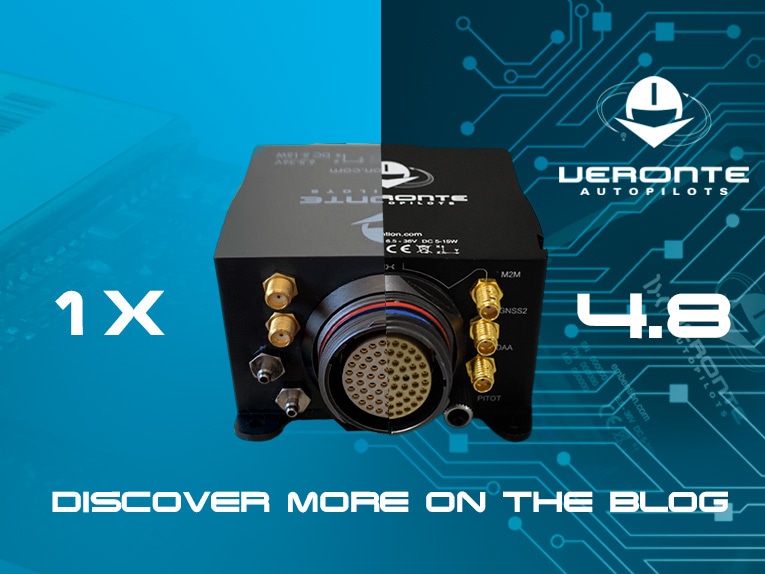
#Product Trends
New hardware 4.8: focusing on safety and precision
Embention has recently released the Veronte Autopilot hardware version 4.8.
Embention is continuously evolving its range of products focusing on safety and precision to improve its performance and reliability. As part of this continuous improvement process, Embention has recently released the Veronte Autopilot hardware version 4.8, which replaces the previous version 4.5, released in 2019. This new version has the following features:
Enhanced sensor accuracy and reliability: dead reckoning navigation is a critical tool for degraded GNSS scenarios, the new sensors in Veronte Autopilot are significantly more accurate than previous ones. These enhanced sensors permit to improve navigation estimation during standard operation and in GNSS-denied navigation.
Improved RTK and GNSS heading: New GNSS receivers in Veronte Autopilot have been improved in various aspects (supported constellations, accuracy, number of concurrent constellations, and frequency). The positioning accuracy has improved from 0.025m+1ppm to 0.01m+ppm CEP, it also improves RTK and GNSS heading estimation.
Enhanced high-temperature hardware design and production materials: in order to offer the best performances in extreme scenarios and to pass more demanding quality and environmental tests. New materials are used in the PCB manufacturing, and these new fibers have better performance in heat conditions, extending the lifetime of the product.
Additional failure detection means: the development of failure detection algorithms and redundant hardware. The new PCB design includes additional signals for failure detection that can communicate each one of the autopilot cores with the arbiter. Also, the internal CAN Bus network has been modified to enhance robustness.
Short-range 2.4GHz LOS included in all units: short-range communications module included, in order to facilitate system integration. This module permits to have an independent link for telemetry download and configuration.
4G BLOS module with extended coverage: BLOS communications and UTM capabilities through an eSIM card. The new hardware uses Veronte Cloud for managing fleets of aircraft. 4G works together with the Remote ID or ADS-B in order to provide collaborative detection and sensing.
Extended GNSS-denied navigation capabilities: flexible and custom Kalman filters, high precision IMU sensors, and several tools in order to build safety automation if GNSS is lost.
Internal Remote ID or ADS-B with IN/OUT: extended collaborative sense and avoid capabilities, allowing the compliance of new FAA unmanned operation requirements. WIFI and Bluetooth modules have been integrated to enable Remote ID communications. This module can be replaced by a 1W ADS-B IN & OUT module if preferred.
Embedded Global DEM, geoid, magnetic, and gravity fields: Worldwide terrain altitude and the magnetic field are included in the Veronte Autopilot to enable the capability of the system to be operated at any point of the world without requiring an internet connection.
Internal enclosure pressure port: A new pressure port has been included for measuring the pressure inside the autopilot for operations that require extended environmental control.
The UAM & UAV sector is evolving every day and new needs and technical requirements are demanded almost every week. Thus, in order to help UAV & UAM manufacturers to reach their goals, Embention has released Veronte Autopilot 4.8, an upgraded version, designed and manufactured in compliance with DO178C, DO254, and DO160.





